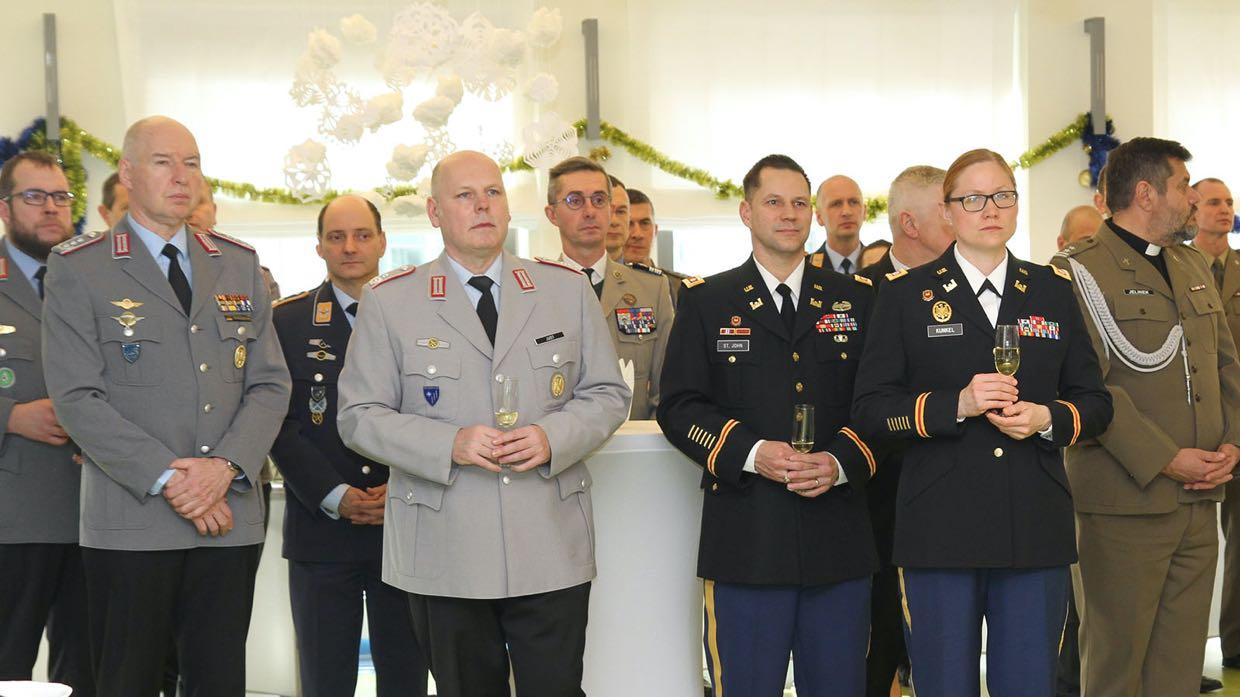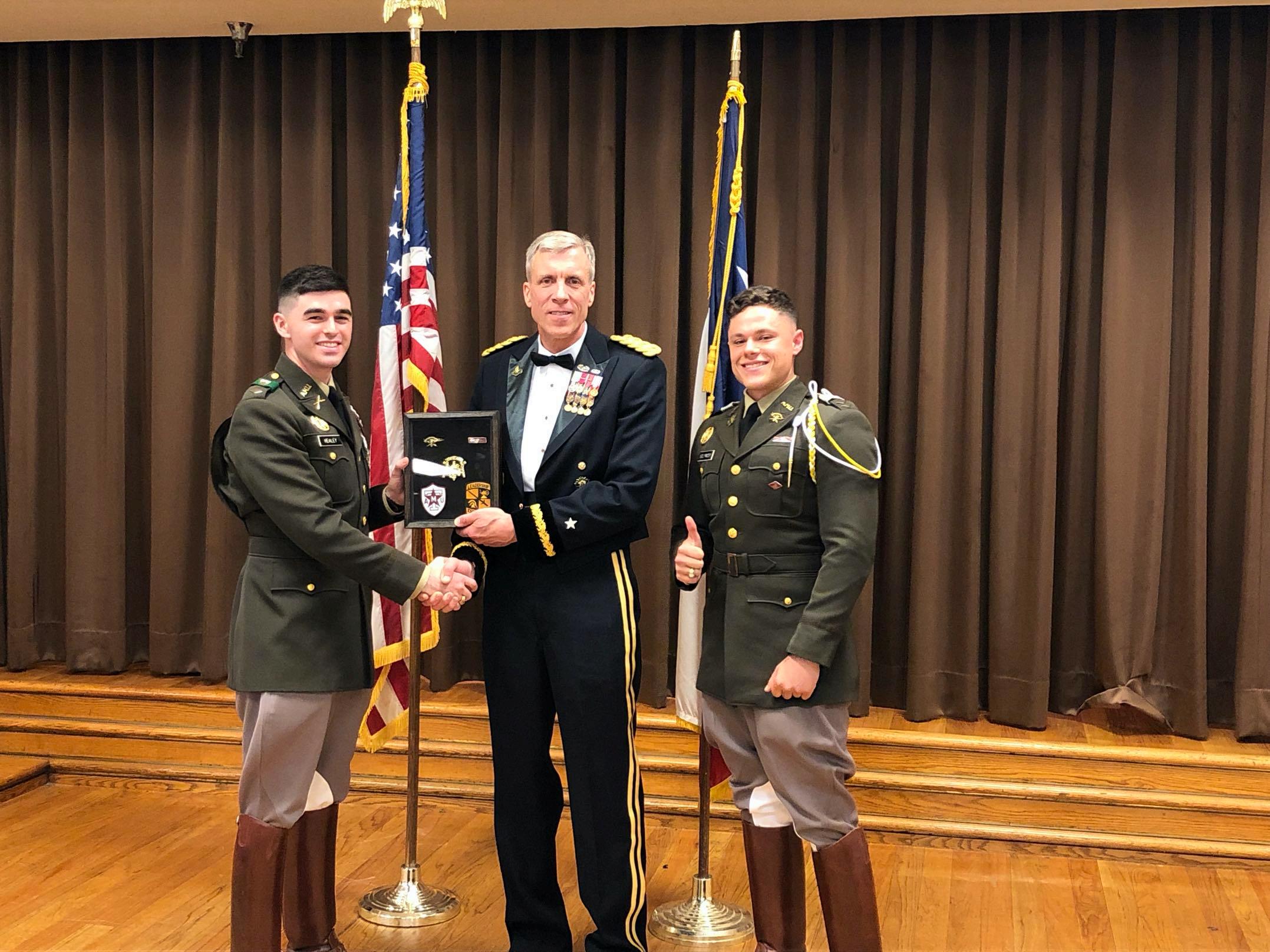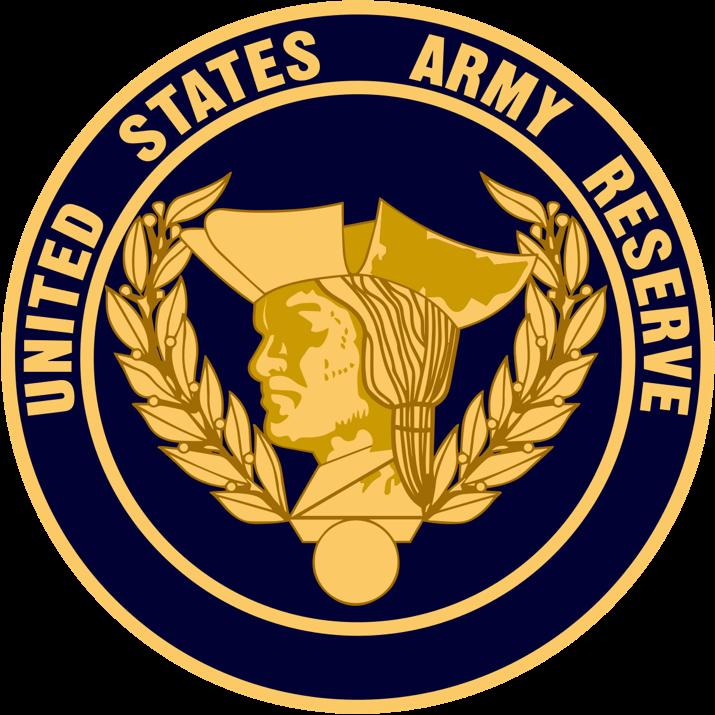
6 minute read
Texas Aggie Alumni
Thomas St. John ’95 takes the Oath of Office becoming an Army Officer at Texas A&M in December 1995

Advertisement
Lt. Colonel St. John (3rd rt.) stands among allies personnel during a reception in Poland.
Second Lieutenant Nicholas Solymosy 20’
Icame to A&M as an average kid. I wasn’t a special student, nor a standout athlete. All I had was a sense of duty and a strong desire to serve in the military. I can confidently say that Army ROTC at A&M forged me into a stronger leader ready for life as an Army officer. AROTC provided me the means to grow mentally, physically, socially, and professionally. Through ROTC alone, I studied Russian in two foreign countries, earned my jump wings, and learned how to lead on the fly while guiding teams, squads, and platoons through tactical scenarios at A&M. Most importantly; however, AROTC at A&M surrounded me with peers of the highest caliber. Some of my best friends airborne wings, air assault badges, Ranger tabs, Sapper tabs, pathfinder badges, and combat decorations. Some have lead soldiers in combat. They’ve deployed to countries in South America, Asia, Europe, and the Middle East. What’s truly humbling, is that the oldest person whose accomplishments I just described is 24 years old. Those are the people I came up with in AROTC. Those are my peers who I trained with for four years. I couldn’t have been surrounded by better talent. That’s what A&M produces.

Now, I am participating in the Infantry Basic Officer Leader Course (IBOLC). Our day to day rhythm is very similar to AROTC. At IBOLC, we get instruction in the classroom, then practice what we learn. The only difference between A&M and IBOLC is the depth at which we learn the is to ROTC at A&M- same level of
material. It’s surprising how similar IBOLC professionalism, same level of standards,
have already: earned master’s degrees, Nicholas Solymosy ’20 preparing me to meet it. ROTC at A&M would be this- If you’re looking for a same level of rigor. Texas A&M prepared me well by exposing me to challenge and My advice to anyone considering Army challenge, an adventure, and a worthwhile/ meaningful experience, Army ROTC at A&M will roll all three into one and deliver it to you on a level you couldn’t imagine.
Unlike other programs across the nation, Texas A&M Army ROTC uses its size, training resources, and continued cooperation with the created an environment of trust and confidence among the program’s senior cadets. After graduating I took my first step in the Army and began Engineer Basic Officer
neighboring Corps of Cadets to create unique opportunities for future lieutenants. As a Leadership Course in Fort Leonard Wood, Missouri. As the Army’s so-called “Swiss Army Knife”,
freshmen you join over one hundred fellow cadets in a community of support and accountability, while bonding over the trials we learned skills ranging from the construction of an airstrip to the demolition of a steel door. A day may
of fish year in the Corps. The next year, with two semesters of basic tactics at your begin with the tactics and procedures for breaching an obstacle and end with a
disposal, you enjoy the responsibilities of a team leader and squad leader. During the third year you demonstrate your discussion of IED detection devices. Outside of the classroom our instructors held us to high standards of physical

competence as a platoon leader or platoon sergeant. And in your final year of the performance, especially those lieutenants preparing for Sapper Leader Course.
program you work with other seniors and Running, rucking, and lifting were a
Military Science Instructors to plan, welcome part of our training day.
resource, and execute all aspects of training, Following my time at Fort Leonard
including field training exercises involving Wood, I traveled to Fort Campbell,
over two hundred cadets. Kentucky, and joined the 101st Airborne
Serving as the program’s Cadet Operations Officer during my senior year introduced me
Corbin Neumann ‘19 Division. I did not worry about my first interaction with the Battalion
to some of the challenges and responsibilities I encounter daily as a lieutenant in the Army. In my position, I established close working relationships with many senior officers and non-commissioned officers while experiencing how a battalion in the Army Commander, nor did I distress about how my battalion operated. Texas A&M Army ROTC already taught me how to speak confidently and respectfully with senior Army leaders; it also taught me the who, what, and why of every senior position within a
operates. The mentorship offered by these leaders
battalion. I was ready.
Captain Jason Zoeller ’14
Captain Jason P. Zoeller ’14 is presently the Company Commander of the U.S Army Network Enterprise Center on Camp Zama in Japan. He has previously served as a Battalion Communications Officer and a Signal Company Platoon Leader in the Aviation Support Battalion on Fort Riley in Kansas. Captain Zoeller was commissioned from Texas A&M University when he successfully graduated from the Mays Business School with a Bachelors in Management Information Systems, completed his Army ROTC requirements, and served honorably in the Texas A&M Corps of Cadets with Company B-1.
Simultaneous Membership Program (SMP)

You may be able to take advantage of a program that allows you to participate in ROTC and enlist in the Army National Guard or Army Reserve at the same time, provided a vacancy exists in either a Guard or Reserve unit. It's called the Simultaneous Membership Program (SMP), and it means that while you're still in college at Texas A&M, you can be gaining valuable experience and earning extra income. In the SMP, you will be paid at the rate of at least a Sergeant (E-5) for your Guard or Reserve service. In addition, you'll receive the ROTC Advanced Course allowance as well. You'll serve as an officer trainee in a Guard or Reserve unit and perform duties commensurate with the grade of second lieutenant. Once you graduate and receive your commission, you may continue your military service with your Reserve or National Guard unit or go on active duty. The ROTC Contract that is agreed upon will determine a cadet status. You are considered
Non-Deployable during your time as an SMP Cadet!
The intent of the SMP Program is to increase officer accessions into the Reserve Components (RC) by increasing ROTC enrollment from enlisted RC members who are attending college. In addition, contracted nonscholarship cadets and Reserve Forces Duty (RFD) scholarship cadets can join a RC unit and the SMP. Advanced Course ROTC SMP students are paid for their Guard/Reserve training and receive the ROTC allowance as well as $1200.00 per year for books. Upon completing the ROTC program, the United States Army Officer agrees to an eight-year obligation, which can be served in the Reserve Forces, on Active Duty or a combination of the two.

The Benefits
ROTC monthly stipend of $420 a month SMP kicker $368 a month GI Bill (amount varies depending on previous military service status) Drill pay of E-5 ($5,181.75 annually)
Eligibility Requirements
Be enrolled in college and have completed at least 30 credits. Have completed Basic and/or Advanced Individual Training. Be under 30 years of age by graduation. Waivers can be granted if you are under 39 years of age by graduation. You pursue an Army-approved academic major. 2.0 GPA on a 4.0 scale. You meet required physical standards.
Your ROTC Commitment
Participating in the SMP program requires you to take ROTC classes, which demand a few hours of your time each week. Upon graduation, you have an obligation to accept a commission and serve full-time in the Active Army, or part-time in either the Army National Guard or the U.S. Army Reserve.





